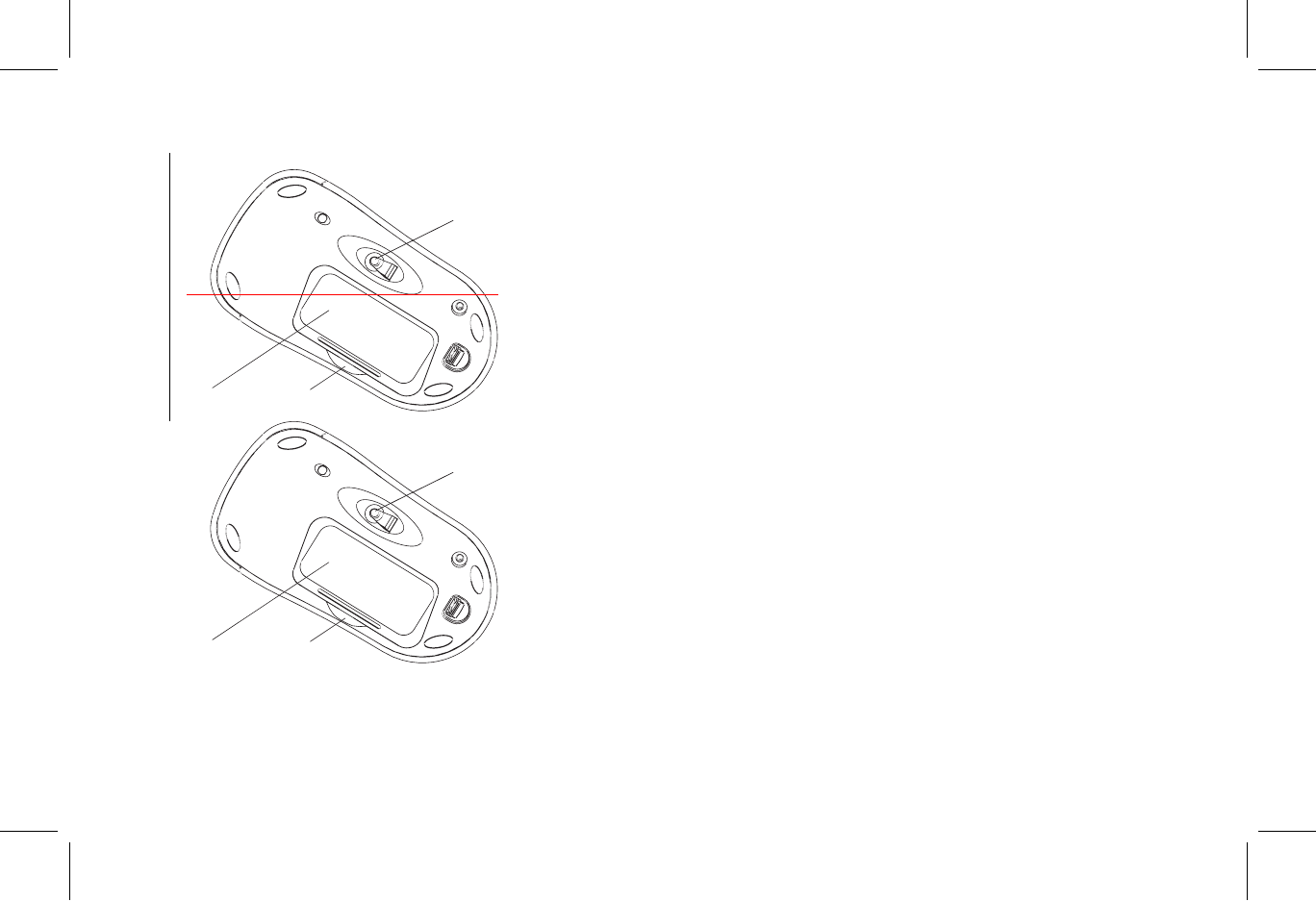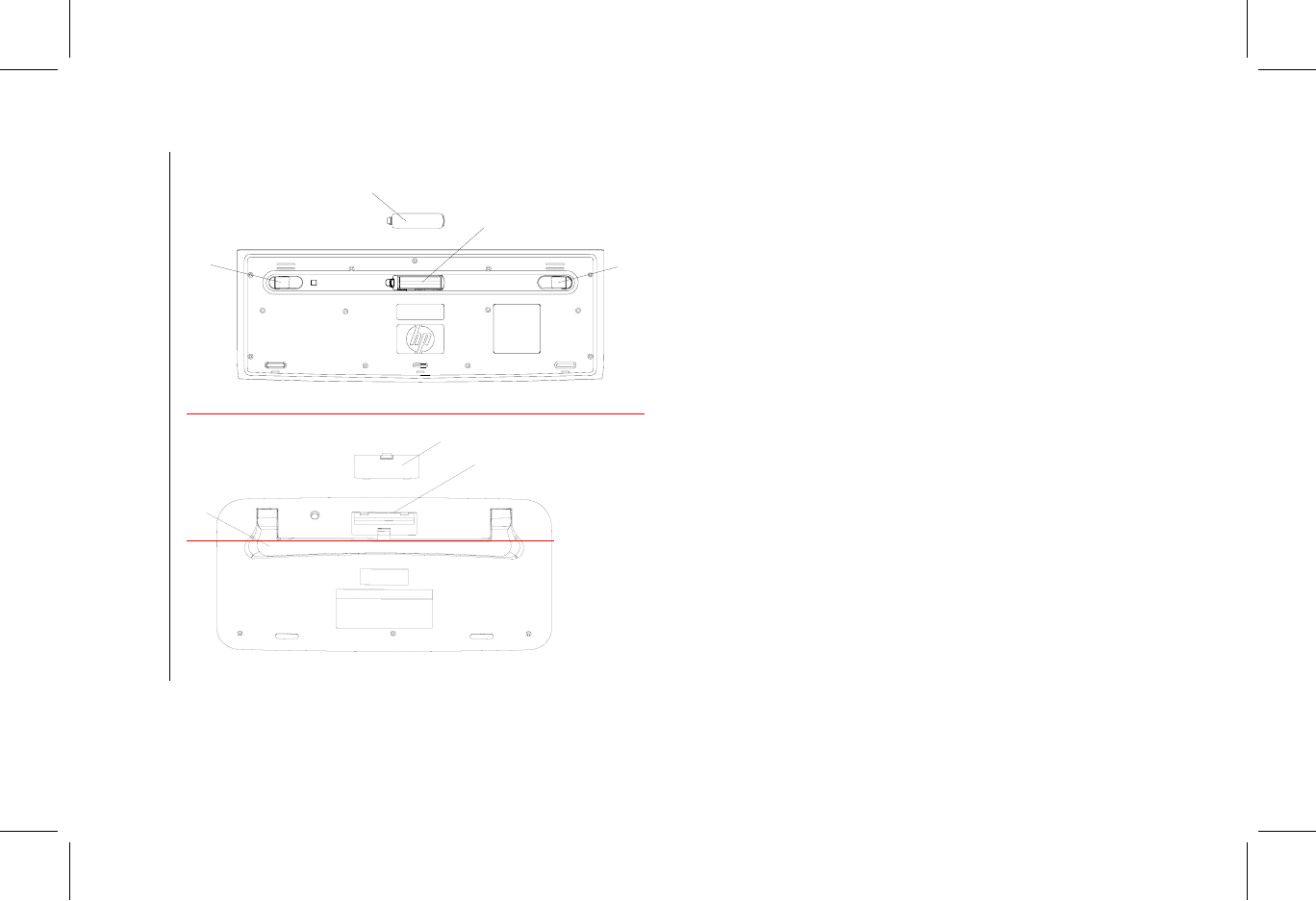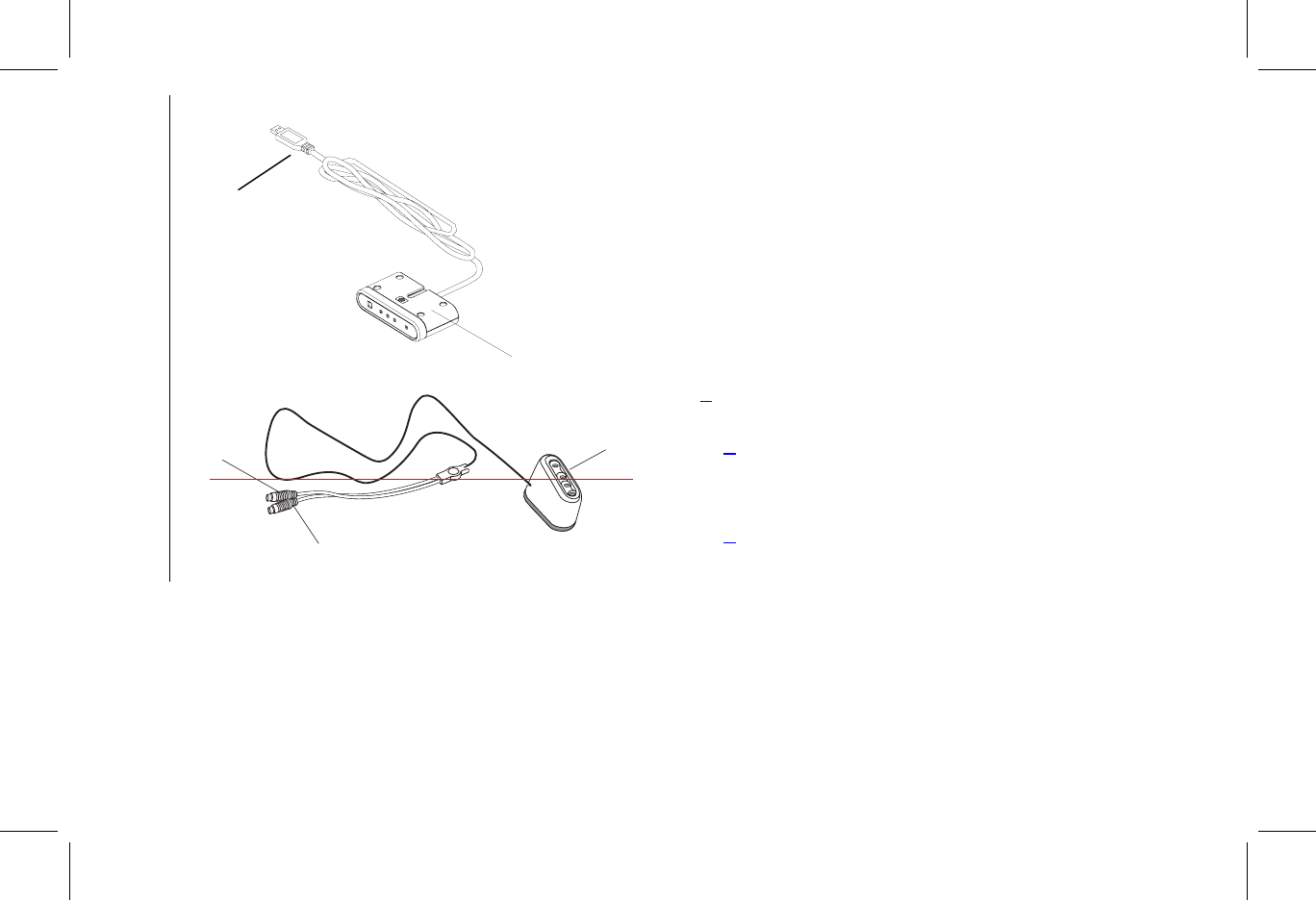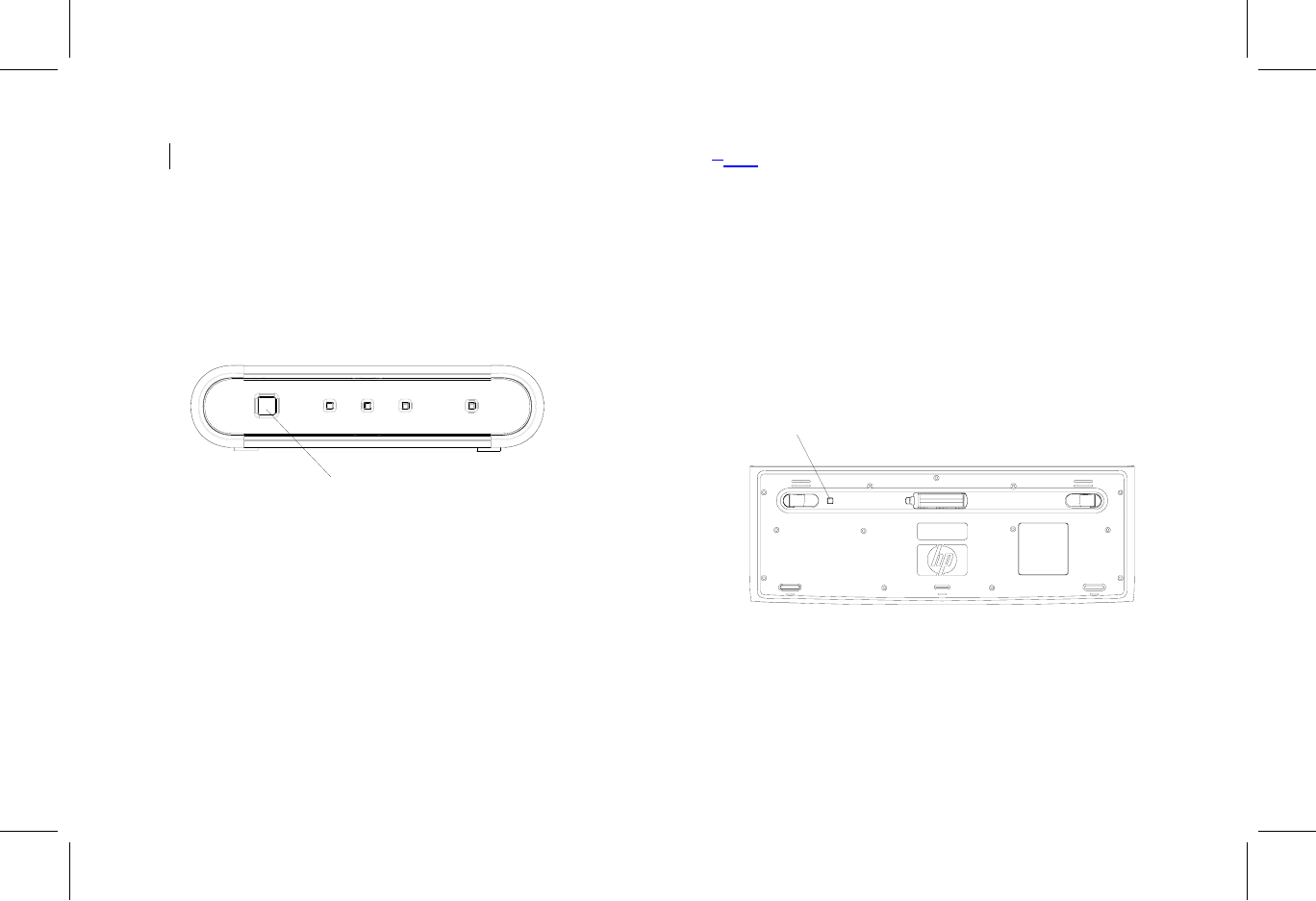Behavior Tech Computer KB5219URF Wireless Keyboard User Manual
Behavior Tech Computer Corporation Wireless Keyboard Users Manual
Users Manual

Filename: 5219urf users guide US_revised(p11).doc Title: hp pavilion home pc
Template: Normal.dot Author: pamela Last Saved By: demi
Revision #: 2 Page: 1 of 13 Printed: 03/03/03 02:22 PM
hp pavilion home pc
Installing the Wireless Keyboard and Mouse Set

Filename: 5219urf users guide US_revised(p11).doc Title: hp pavilion home pc
Template: Normal.dot Author: pamela Last Saved By: demi
Revision #: 2 Page: 2 of 13 Printed: 03/03/03 02:22 PM

HP Pavilion home PC 1
Filename: 5219urf users guide US_revised(p11).doc Title: hp pavilion home pc
Template: Normal.dot Author: pamela Last Saved By: demi
Revision #: 2 Page: 1 of 13 Printed: 03/03/03 02:22 PM
Installing the Wireless
Keyboard and Mouse Set
The wireless keyboard and mouse set
consists ofa receiver (A) that plugs into the
computer, a wireless keyboard (B), and a
wireless mouse (C).
Note: This wireless set is compatible with your
HPPavilion home PC and not intended
forusewithother computers.
Note: You can replace the batteries in the mouse
andkeyboard without turning off the
computer. The computer must be on to
change the ID setting on the three units.
A
B
C

2HP Pavilion home PC
Filename: 5219urf users guide US_revised(p11).doc Title: hp pavilion home pc
Template: Normal.dot Author: pamela Last Saved By: demi
Revision #: 2 Page: 2 of 13 Printed: 03/03/03 02:22 PM
Getting the Mouse Ready
EE1
K
EE1
K
Note: Do not use rechargeable batteries in the
mouse. Alkaline batteries are recommended.

HP Pavilion home PC 3
Filename: 5219urf users guide US_revised(p11).doc Title: hp pavilion home pc
Template: Normal.dot Author: pamela Last Saved By: demi
Revision #: 2 Page: 3 of 13 Printed: 03/03/03 02:22 PM
Install the two AA alkaline batteries
(provided) inthe wireless mouse: Push in at
E1 and lift thebattery cover (E) from the
bottom of the mouse, and then insert the
batteries into the compartment. Note the
battery icons, and make sure batteries are
placed in the correct direction. Replace the
cover.
Note: The red LED (K) turns on indicating the
batteries are installed correctly.

4HP Pavilion home PC
Filename: 5219urf users guide US_revised(p11).doc Title: hp pavilion home pc
Template: Normal.dot Author: pamela Last Saved By: demi
Revision #: 2 Page: 4 of 13 Printed: 03/03/03 02:22 PM
Getting the Keyboard Ready
II
G
H
G
H
J
Note: Do not use rechargeable batteries in the
keyboard. Alkaline batteries are recommended.

HP Pavilion home PC 5
Filename: 5219urf users guide US_revised(p11).doc Title: hp pavilion home pc
Template: Normal.dot Author: pamela Last Saved By: demi
Revision #: 2 Page: 5 of 13 Printed: 03/03/03 02:22 PM
1Install the two AA alkaline batteries
(provided) in the wireless keyboard: Remove
the cover (G) from the bottom of the
keyboard, and insert the batteries into the
compartment (H). Note the battery icons,
and make sure batteries are placed in the
correct direction. Replace the cover.
2Adjust the keyboard height by lifting the
adjustment bar (JI).
Getting the Receiver Ready
The receiver (A) must be placed upright and
positioned properly to avoid interference
from other electrical equipment.
1Turn off your computer, and disconnect the
power cord and modem/phone cable.
2Connect the receiver cable (L) to the USB
connector on the back of the computer.

6HP Pavilion home PC
Filename: 5219urf users guide US_revised(p11).doc Title: hp pavilion home pc
Template: Normal.dot Author: pamela Last Saved By: demi
Revision #: 2 Page: 6 of 13 Printed: 03/03/03 02:22 PM
A
L
M
A
3Set the receiver upright and follow these
guidelines.
nA: Minimum 20 cm (8 inches) clearance
between the receiver and other
electronic devices.
nB: Maximum 1.5 m (59 inches) working
distance between the receiver and
wireless mouse or wireless keyboard.
L

HP Pavilion home PC 7
Filename: 5219urf users guide US_revised(p11).doc Title: hp pavilion home pc
Template: Normal.dot Author: pamela Last Saved By: demi
Revision #: 2 Page: 7 of 13 Printed: 03/03/03 02:22 PM
nC: Minimum 20 cm (8 inches) clearance between the receiver and the monitor.
nPlace no electronic device between the receiver and wireless mouse or wireless keyboard.
Note: This is one example of the setup. Other setup positions are also possible.
Warning: To avoid causing interference, keep the receiver at least 20 cm (8 inches) away from the
monitor.

8HP Pavilion home PC
Filename: 5219urf users guide US_revised(p11).doc Title: hp pavilion home pc
Template: Normal.dot Author: pamela Last Saved By: demi
Revision #: 2 Page: 8 of 13 Printed: 03/03/03 02:22 PM
Setting Up the Wireless Set
The mouse and keyboard have 255 IDs that
are randomly selected when you press the
ID button. This helps protect against
interference from other wireless devices in
the same area.
Important: The word CONNECT labels the ID button
on the bottom of each unit. To press the ID
button, use a blunt pointed object, like the tip
of a ball point pen.
1 Connect the power cord and
modem/telephone cable to the
computer. Turnon the computer.
Receiver
2 On the bottom of the receiver, press the
IDbutton (D) once with a blunt pointed
object.
The top activity LED (N, a blue light) on the
receiver will start flashing and will continue
flashing until the next step are completed
or until 30 seconds pass.
D
Important: If 30 seconds pass before you complete
steps 3, you must repeat steps 2, 3 to set the
IDs.

HP Pavilion home PC 9
Filename: 5219urf users guide US_revised(p11).doc Title: hp pavilion home pc
Template: Normal.dot Author: pamela Last Saved By: demi
Revision #: 2 Page: 9 of 13 Printed: 03/03/03 02:22 PM
N
O
P
Q
Mouse
3 On the bottom of the mouse, press the
IDbutton (F) once with a blunt pointed
object.
The mouse sends a new ID and flashes the
mouse sensor LED (K) three times. The
receiver flashes the blue top activity LED
(N) three times and then stops to show it
has accepted the new ID for the mouse.
F
Note: At this time, when you move the mouse across
a surface, the blue activity LED (N) on the
receiver will go on and off indicating the
mouse and the receiver are working together.
Important: The mouse goes into a sleep or suspend
mode after 20 minutes of inactivity. Click a
button on the mouse to wake it. (Moving the
mouse does not wake it.)
K

10 HP Pavilion home PC
Filename: 5219urf users guide US_revised(p11).doc Title: hp pavilion home pc
Template: Normal.dot Author: pamela Last Saved By: demi
Revision #: 2 Page: 10 of 13 Printed: 03/03/03 02:22 PM
Receiver
4 On the bottom of the receiver, press the
IDbutton (D) once with a blunt pointed
object.
The top activity LED (N, a blue light) on the
receiver will start flashing and will continue
flashing until the next step are completed
or until 30 seconds pass.
D
Important: If 30 seconds pass before you complete
steps 5, you must repeat steps4, 5 to set the IDs.
Keyboard
4 5 On the bottom of the keyboard, press
the IDbutton (J) once with a blunt
pointed object.
The keyboard sends a new ID. The
receiver flashes the top activity LED (N, a
blue light) three times and then stops to
show it has accepted the new ID for the
keyboard.
G
J

HP Pavilion home PC 11
Filename: 5219urf users guide US_revised(p11).doc Title: hp pavilion home pc
Template: Normal.dot Author: pamela Last Saved By: demi
Revision #: 2 Page: 11 of 13 Printed: 03/03/03 02:22 PM
Federal Communication Commission
Interference Statement
This equipment has been tested and
found to comply with the limits for a Class
B digital device, pursuant to Part 15 of
the FCC Rules. These limits are
designed to provide reasonable
protection against harmful interference in
a residential installation. This
equipment generates, uses and can
radiate radio frequency energy and, if not
installed and used in accordance with the
instructions, may cause harmful
interference to radio communications.
However, there is no guarantee that
interference will not occur in a particular
installation. If this equipment does
cause harmful interference to radio or
television reception, which can be
determined by turning the equipment off
and on, the user is encouraged to try to
correct the interference by one of the
following measures:
- Reorient or relocate the receiving
antenna.
- Increase the separation between the
equipment and receiver.
- Connect the equipment into an outlet
on a circuit different from that
to which the receiver is connected.
- Consult the dealer or an experienced
radio/TV technician for help.
FCC Caution: Any changes or
modifications not expressly approved by
the party responsible for compliance
could void the user's authority to operate
this equipment.
This device complies with Part 15 of the
FCC Rules. Operation is subject to the
following two conditions: (1) This device
may not cause harmful interference, and
(2) this device must accept any
interference received, including
interference that may cause undesired
operation.